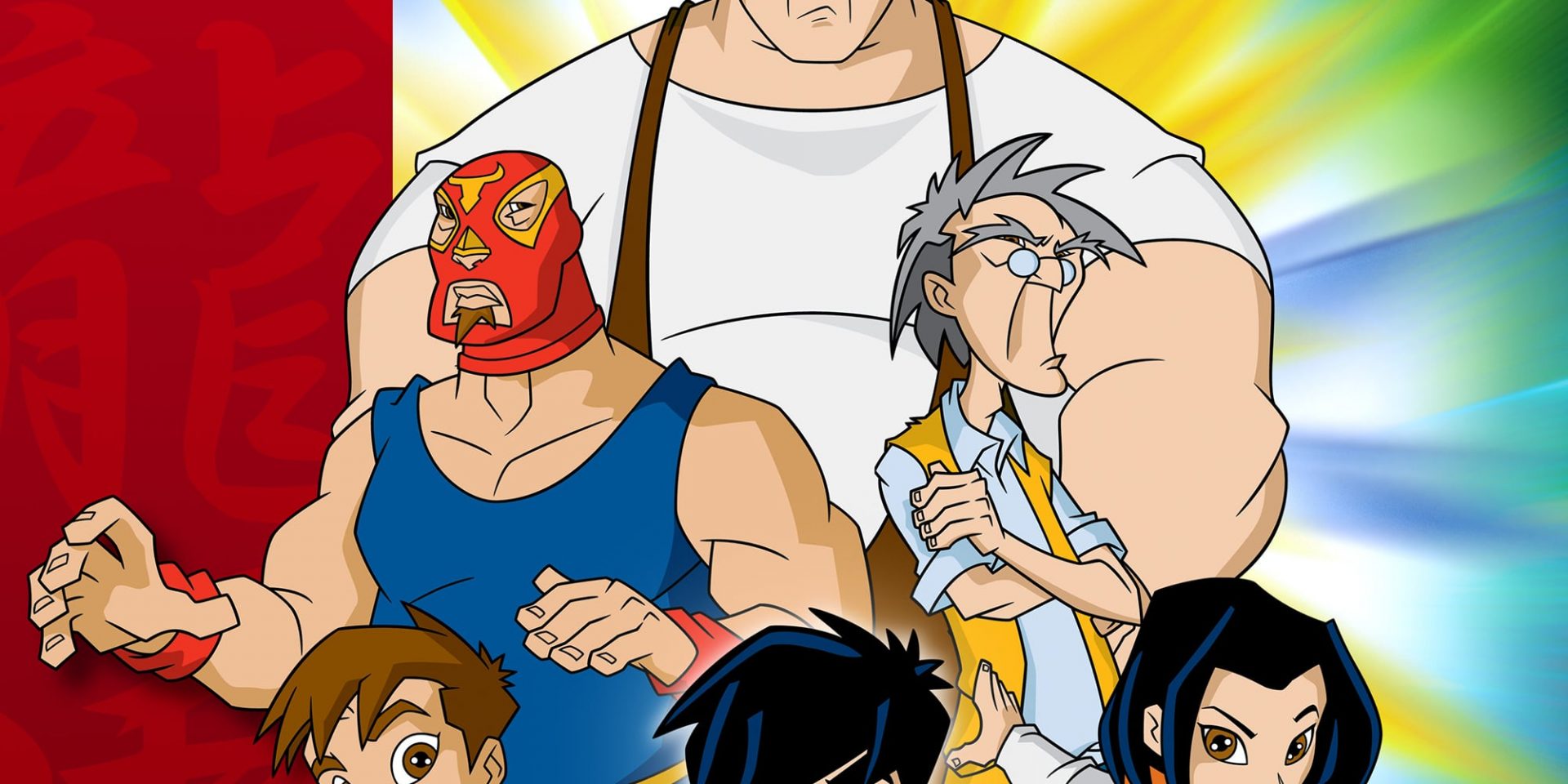Jackie Chan Adventures (2000-2005)
Description: Jackie Chan, an amateur archelogist, would prefer to quietly do his work for the local university, but fate has dealt another hand. That happens when he finds a shield containing a talisman is but the first of a dozen pursued by a criminal organization called The Dark Hand led a man called Valmont and guided by a spirit called Shendu. Against this Jackie, his niece Jade, and their uncle must cooperate with the secret law enforcement organization, Section 13, to oppose this threat. Along the way, our heroes must face wild dangers that will demand all of Jackie’s skill in martial arts and his daring to overcome.
Creator: John Rogers
Stars: Jackie Chan, James Sie, Stacie Chan
Photos
Trivia
The character of Uncle Chan is based on Charles Chan, Jackie’s father.
The opening sequence took almost a year to develop.
Throughout various fifth-season episodes, several of the magical talismans are hidden on screen.
All animated Jackie’s beige/khaki clothes are similar to the real Jackie’s clothes in the film Armour of God (1986).
As a child, Uncle Chan was part of the Seven Little Fortunes opera troupe, like the real Jackie Chan.
Rock band Wheatus recorded a theme song called “Jackie Chan’s the Man” which would play during the end credits. However, during credit titles is when KidsWB airs promotions for their other shows, and thus the song has yet to air DURING the credits (even though Wheatus is credited). KidsWB began airing the song over some montage shots between episodes. In USA, the only way to hear the song DURING the closing credits is to view the Spanish Language version that currently airs on Telemundo Saturday mornings! (The song is still in English)
There are numerous references to Jackie Chan’s career throughout the series. For example, in the first episode when Jade comes in, Jackie assumes she doesn’t speak English and is surprised when she does in the middle of combat (Rush Hour). Another example is season 3 episode 7 Jackie is bitten by a Snake, and uses a kung fu style known as “the drunken master” from one of his earliest headlining films of the same name.


